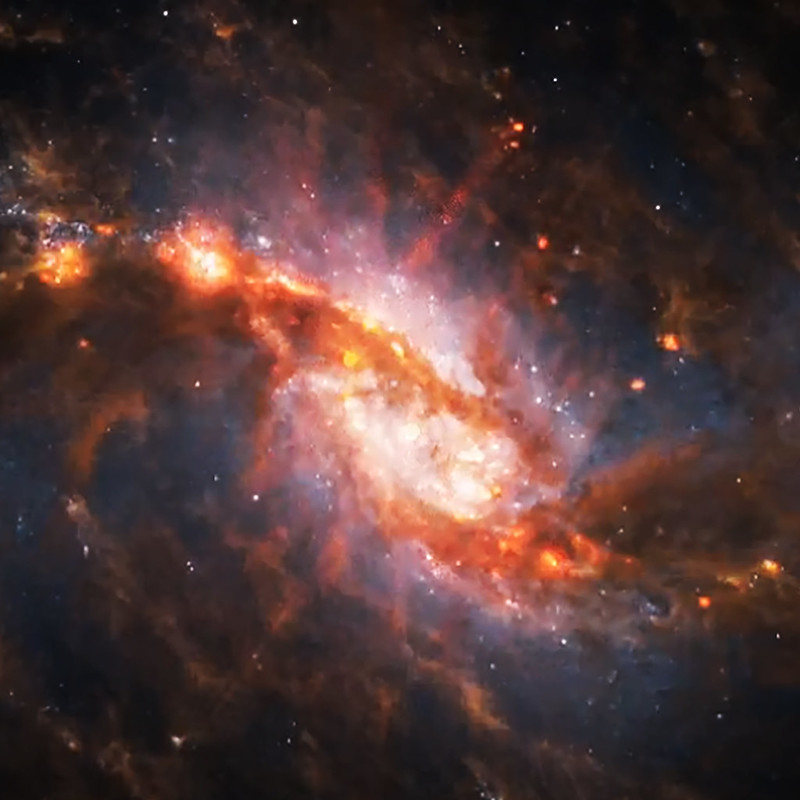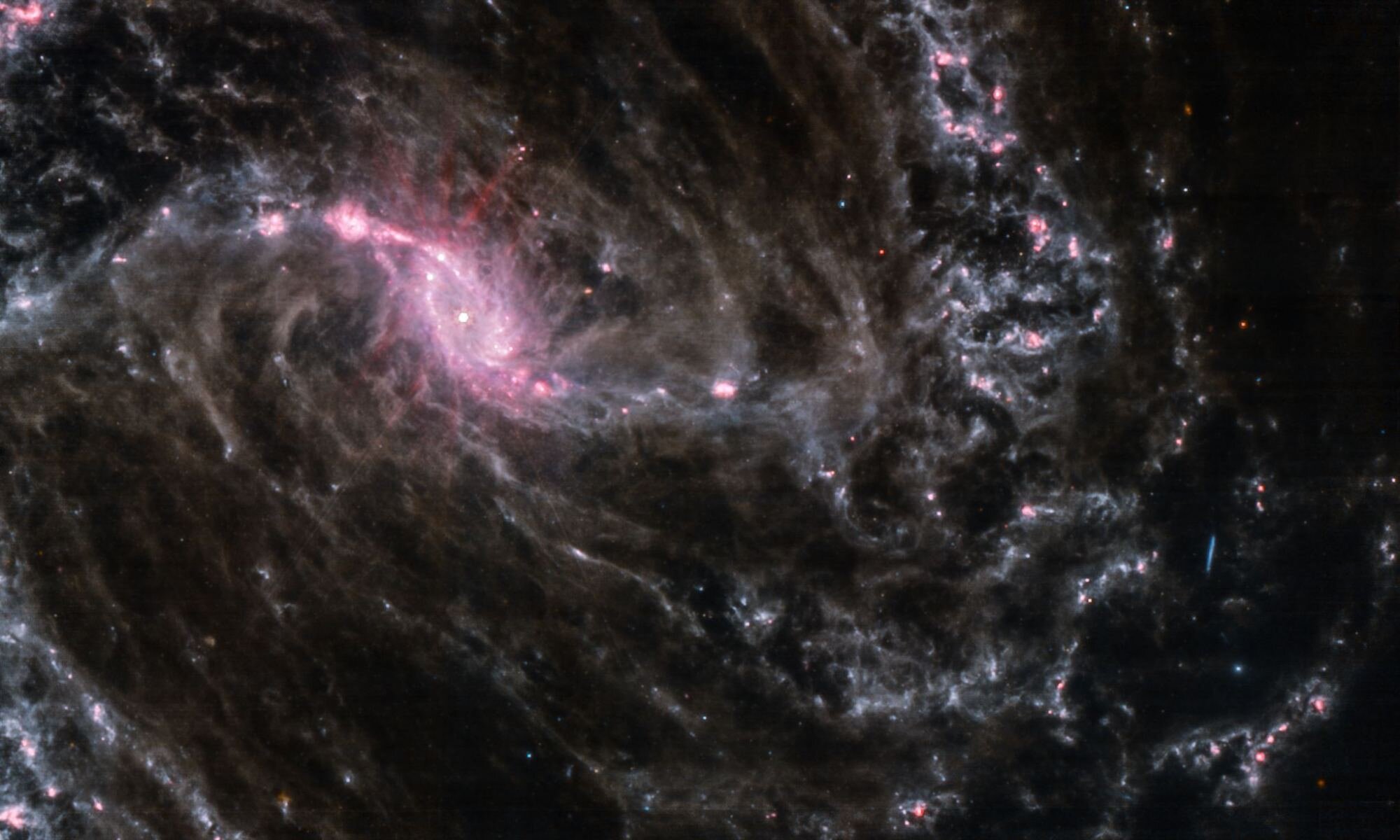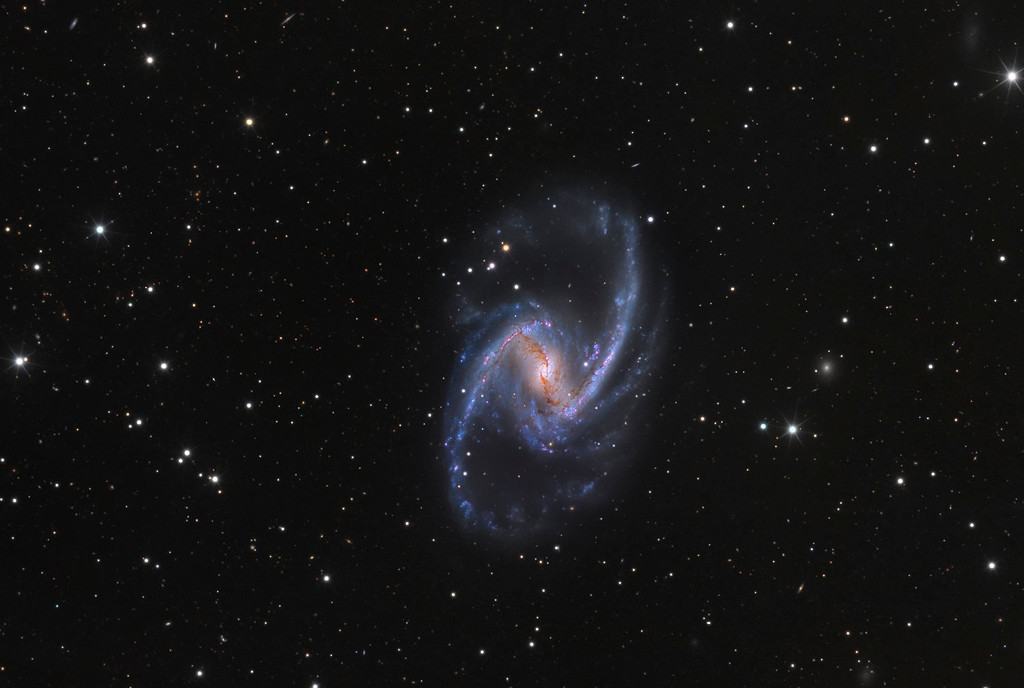Fantastic images, AVAO, HST, JWST and Geck!



You asked:
The central bar fans out into different armlike "feathers". Does the statement above mean that the dust, the gas and the stars forming in it flow from all these "feathers" to the central bar and from there are drawn into the black hole in the center, where they are "devoured" by it?
Well, given that NGC 1365 has a modest AGN, an Active Galactic Nucleus, gas is definitely being devoured, albeit at a slow pace, by the black hole of this galaxy.
Take a look at the HST/JWST/Geck picture of NGC 1365 that you posted yourself, and look at all the "white blobs" near the core of the galaxy. These things are almost certainly huge young star clusters, and they have formed because so much gas has been flowing into this region, most likely along the dust lanes of the bar.
Some gas must also be devoured by the black hole, causing the accretion disk to act up. It is after all the the accretion disks, not the black holes themselves, that launch jets. Note in the HST/JWST/Geck picture of NGC 1365 at least one long straight jet, which however doesn't seem to be centered on the core of NGC 1365. Several other, shorter or more crooked structures may possibly also be jets.
But while gas is clearly flowing along the dust lanes of the bar into the core region of NGC 1365, gas is also gathering at two other places in NGC 1365, namely, at the two bar ends.
Look at the very pink regions of the arms of NGC 1365. These are actually the regions closest to the bar ends. Gas gathers here and gives rise to enhanced levels of star formation.
Milky Way. Image: Nick Risinger.
We can actually see the bar ends of the Milky Way, too. There are enhanced levels of star formation in Cygnus (where the North America Nebula is located for example) and Carina (which hosts the Carina Nebula).
But Zeta Ophiuchi is a nearby object that has nothing to do with the bar or the bar ends of the Milky Way,
Ann
 NGC 1365: Majestic Island Universe
NGC 1365: Majestic Island Universe







